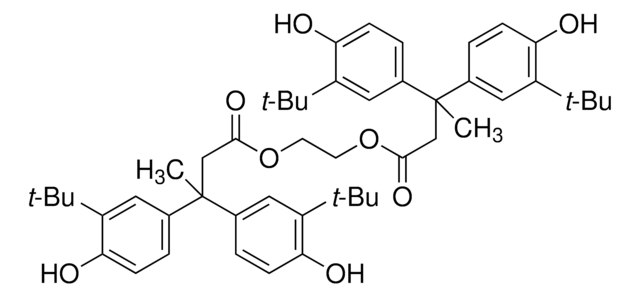O0140000
Plastic additive 20
European Pharmacopoeia (EP) Reference Standard
Synonym(s):
Oleamide, Oleamide R, cis-9,10-Octadecenoamide, cis-9-Octadecenamide, Oleic acid amide
About This Item
Recommended Products
grade
pharmaceutical primary standard
manufacturer/tradename
EDQM
drug control
regulated under CDSA - not available from Sigma-Aldrich Canada
application(s)
pharmaceutical (small molecule)
format
neat
storage temp.
2-8°C
SMILES string
CCCCCCCC\C=C/CCCCCCCC(N)=O
InChI
1S/C18H35NO/c1-2-3-4-5-6-7-8-9-10-11-12-13-14-15-16-17-18(19)20/h9-10H,2-8,11-17H2,1H3,(H2,19,20)/b10-9-
InChI key
FATBGEAMYMYZAF-KTKRTIGZSA-N
Looking for similar products? Visit Product Comparison Guide
General description
Application
Biochem/physiol Actions
Packaging
Other Notes
Hazard Statements
Precautionary Statements
Hazard Classifications
Aquatic Chronic 4
Storage Class Code
11 - Combustible Solids
WGK
WGK 1
Flash Point(F)
404.6 °F - closed cup
Flash Point(C)
207 °C - closed cup
Choose from one of the most recent versions:
Certificates of Analysis (COA)
Sorry, we don't have COAs for this product available online at this time.
If you need assistance, please contact Customer Support.
Already Own This Product?
Find documentation for the products that you have recently purchased in the Document Library.
Customers Also Viewed
Our team of scientists has experience in all areas of research including Life Science, Material Science, Chemical Synthesis, Chromatography, Analytical and many others.
Contact Technical Service







